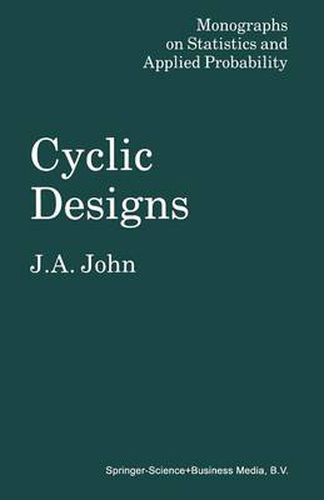Readings Newsletter
Become a Readings Member to make your shopping experience even easier.
Sign in or sign up for free!
You’re not far away from qualifying for FREE standard shipping within Australia
You’ve qualified for FREE standard shipping within Australia
The cart is loading…






This title is printed to order. This book may have been self-published. If so, we cannot guarantee the quality of the content. In the main most books will have gone through the editing process however some may not. We therefore suggest that you be aware of this before ordering this book. If in doubt check either the author or publisher’s details as we are unable to accept any returns unless they are faulty. Please contact us if you have any questions.
The biggest single influence on the development of the subject of design of experiments over the past quarter-century has been the availability of computers. Prior to the computer it was essential that any design had a straightforward method of analysis, which meant that the mathematical and combinatorial properties of the designs were of primary importance. Many of the designs proposed and studied also possessed important statistical properties and thus continue to be practically useful but, now that ease of analysis is less important, a very large number of these designs no longer have any real value. With the advent ofthe computer it has become possible to study families of designs which have relatively simple methods of construction and which provide large numbers of designs. Within a family, the designs which satisfy certain desirable statistical, rather than mathematical, properties can then be identified using a combin ation of theory and computing. One of the primary aims of this monograph is to study families of block and row-column designs, both unifactor and multifactor, whose methods of construction are cyclical in nature; hence the title Cyclic Designs. The usual practice adopted in books on the design of experiments is to follow the description of a particular design by its method of analysis and, possibly, a numerical example.
$9.00 standard shipping within Australia
FREE standard shipping within Australia for orders over $100.00
Express & International shipping calculated at checkout
This title is printed to order. This book may have been self-published. If so, we cannot guarantee the quality of the content. In the main most books will have gone through the editing process however some may not. We therefore suggest that you be aware of this before ordering this book. If in doubt check either the author or publisher’s details as we are unable to accept any returns unless they are faulty. Please contact us if you have any questions.
The biggest single influence on the development of the subject of design of experiments over the past quarter-century has been the availability of computers. Prior to the computer it was essential that any design had a straightforward method of analysis, which meant that the mathematical and combinatorial properties of the designs were of primary importance. Many of the designs proposed and studied also possessed important statistical properties and thus continue to be practically useful but, now that ease of analysis is less important, a very large number of these designs no longer have any real value. With the advent ofthe computer it has become possible to study families of designs which have relatively simple methods of construction and which provide large numbers of designs. Within a family, the designs which satisfy certain desirable statistical, rather than mathematical, properties can then be identified using a combin ation of theory and computing. One of the primary aims of this monograph is to study families of block and row-column designs, both unifactor and multifactor, whose methods of construction are cyclical in nature; hence the title Cyclic Designs. The usual practice adopted in books on the design of experiments is to follow the description of a particular design by its method of analysis and, possibly, a numerical example.